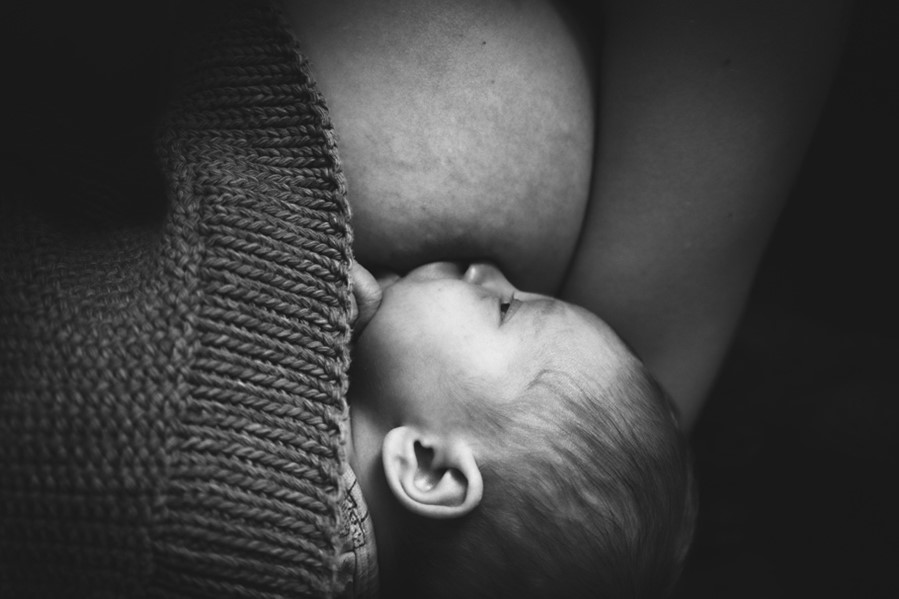
Breast and nipple thrush (BNT) is a yeast infection of the nipple and breast caused by the fungal organism Candida, a common cause of all thrush infections. It occurs most commonly in breastfeeding mothers.
It is normal for babies to have Candida in the mouth and digestive system, but because the immune system of infants is undeveloped and immature, fungal overgrowths are common—and this overgrowth can result in thrush. Alternatively, oral thrush in newborn babies can also occur because of infection of their oral cavity as they pass through the birth canal during delivery, if the mother has vaginal thrush. This is why investing in your gut health consistently helps to keep all our bacteria in balance Almost one in four pregnant mothers will experience vaginal thrush near delivery. In this scenario, it can then be passed from a baby’s mouth to the mother’s breast. Nursing mothers are also more susceptible to this type of infection when they have cracks in their nipples due to nipple trauma.
In reverse, mothers can develop a Candida infection on their nipples while taking antibiotics or steroids. This infection can then be transferred to their babies while breastfeeding. The infection can also be passed through supplies, like breast pumps, pacifiers, and bottles. If you are experiencing nipple thrush, breastfeeding a baby who has oral thrush, and looking to prevent or break the cycle of these infections and soothe symptoms, keep reading!
Signs Of Nipple And Breast Thrush
- Your nipples may appear bright pink; the areola may be reddened, shiny, dry, or flaky. Rarely a fine white rash may be seen.
- Nipple damage (e.g., a crack) that is slow to heal.
- The pain associated is often described as “burning” sensation and does not improve with better latch or positioning techniques.
- There can be stabbing type pain deep within your breasts during or between feedings, and sometimes radiates into the back, shoulder, or armpit.
- Itching on or around the nipple and areola.
- Signs of thrush may be present in your baby’s mouth or on your baby’s bottom, or both. Thrush in the mouth appears as a thick white coating on the tongue or white, soft, fuzzy spots on the inside of the cheeks, gums, tongue, or lips. Thrush on a baby’s bottom appears as a bright red rash with spots around it.
- Occasionally there are no apparent symptoms.
If you have nipple pain that does not go away when you adjust your breastfeeding attachment, you may need to talk with a lactation consultant or other health care professional about nipple thrush. The pain may be severe enough to lead to early weaning if the condition is not treated, know that there are some wonderful home remedies that are very effective. Early diagnosis and treatment of nipple and breast thrush will help to improve your breastfeeding experience.
Standard Treatments
Conventional treatment for thrush in breastfeeding mums and babies includes approaches such as antifungals, antibiotics, and anti-inflammatories. Most treatments are topical, but there are oral medications also. Often babies are treated for thrush and any other fungal via an oral gel or drops. They all carry their own list of side effects that should be taken into consideration and have potential for further harm to our bodies.
Alternatives & Natural Treatment Protocols
For most, candida is kept in check by our good gut flora, but this can easily be thrown out of balance. Stress, lack of sleep, and poor diet are the most common issues that new mothers face, and these are all contributing factors to “brewing up” a yeast infection.
The Main Areas To Address To Manage Or Reduce Nipple Thrush Include:
- Improve your gut health
- Start on a DIET that reduces candida overgrowth
- Add a probiotic to your diet to restore balance to the flora and bacteria in your system. There are safe probiotics available for babies too.
- Add immune boosting supplements to your diet.
- Find a recommended chiropractor. Having your nervous system checked and spine adjusted can help to rebalance your immune system and allow your body to naturally move back into balance.
And Here Are Some Natural Remedies You Can Easily Find At Home To Minimise Or Remove The Need For Damaging Antifungal, Antibiotics, And Anti-Inflammatories Medications:
- Keep your nipples dry by frequently changing breast pads as thrush grows well in a moist and warm environment.
- To prevent the spread of thrush, wash your hands thoroughly after nappy changes and before and after applying any creams/lotions.
- Clean teats and dummies (if using) thoroughly after use and boil for five minutes.
- Wash towels, bras, cloth nursing pads etc. in hot soapy water and air-dry outside in the sunshine is preferrable.
- Wear wide-based, hard, nipple shells to prevent your bra from sticking to your sore nipples.
- Wear a fresh clean bra every day.
- After nursing, rinse your nipples in a solution of 1 cup water mixed with 1 tbsp of apple cider vinegar (natural anti-fungal). Pat dry using organic cotton pads (apply only if your nipples are not cracked and bleeding)
- Alternate with Grapefruit seed extract (GSE): There are 3 ways of using GSE:Mix 2-5 drops of GSE in 30 ml (1 oz) of distilled water. Use a cotton tip to apply this diluted solution on the nipple/areola after every feed. Remember to change the Q-tip with every new application.
- GSE can also be taken orally by the mother. The dose is 250 mg 3 times in a day in pill form, or 5 drops in water 3 times a day.
- GSE can be added to the laundry, in a dose of 15-20 drops in the rinse cycle.
- Expose baby’s bottom to the air several times a day.
- For a diaper/nappy rash yeast infection, wash baby’s bottom with warm, mild soapy (not antibacterial) water, and then rinse with a vinegar and water solution (1 tbsp white vinegar/1 cup of water). Pat dry or use a hair dryer on a low setting to dry the area.
- Prepare a paste of baking soda and water (1 tbsp baking soda with 3 tbsp water). Apply this solution to the affected areas in the baby’s mouth with an organic cotton tip. This remedy may also be used on the mother’s nipples or the baby’s bottom.
- Remember all family members should be checked and treated for any candida infections.
Should You Continue Breastfeeding With Thrush?
When it comes to nursing with thrush, it is not only possible, but also completely and totally safe. It is important to continue breastfeeding if you can. But make sure to consult with your health care professional about whether or not you should continue breastfeeding if choosing to use any specific medicinal options.
Keep in mind, it takes time to completely resolve a Candida overgrowth, so pain, discomfort, and/or itching may continue for some time.
Jennifer Barham-Floreani
(Bach. Chiropractic, Bach. App Clinical Science
Registered internationally, no longer practicing as a chiropractor in Australia.)
. . . . .
References:




